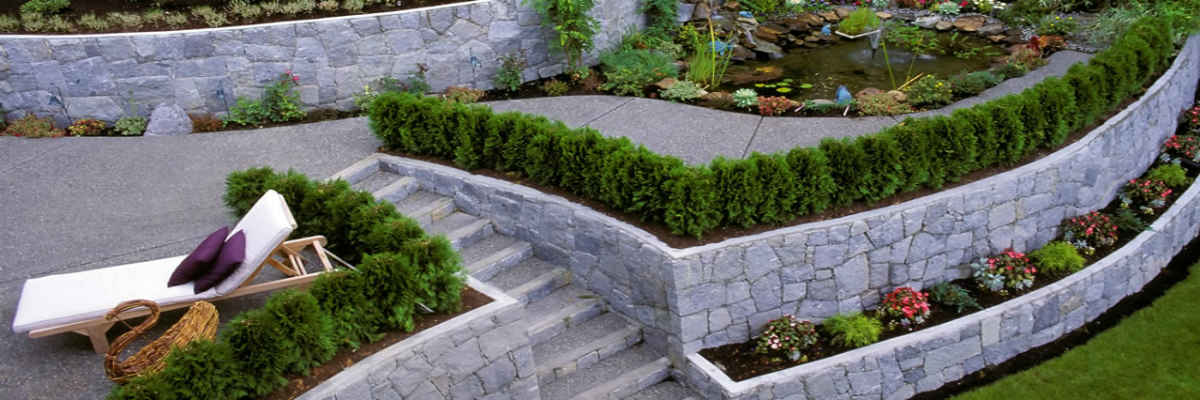Water Conservation Strategies Transforming Australian Mine Sites
G’day, folks! Pull up a chair and grab a cold one, because we’re about to dive into a topic that’s as crucial to Australian mining as a good pair of steel-cap boots – water conservation. In a country that’s drier than a dead dingo’s dinner, how our mining companies manage water is becoming as important as the minerals they dig up.
Now, I know what you’re thinking. “Water conservation in mining? Isn’t that like trying to keep a Great White as a pet?” But hold your horses, because the clever cookies in our mining industry are pulling off some pretty impressive tricks when it comes to saving our precious H2O.
From the parched plains of the Pilbara to the tropical top end, Australian mine sites are transforming faster than a bluey changing colors. So, let’s take a gander at how they’re turning the tide on water waste.
- Cutting-Edge Water Treatment: From Mucky to Crystal Clear
Let’s kick things off with something that used to be a real headache for mining operations – what to do with all that dirty water. These days, mine sites are turning into water treatment wizards, making murky mine water cleaner than a whistle.
I visited a coal mine in the Hunter Valley where they’ve set up a water treatment plant that looks like something out of a sci-fi flick. Massive tanks, whizzing pumps, and more pipes than you can poke a stick at. The site’s environmental manager, Shazza, couldn’t stop grinning as she showed me around.
“See this?” she said, holding up a glass of water that looked clearer than Sydney Harbour on a good day. “This came out of our tailings dam this morning. Now it’s clean enough to put back in the local creek system. We’re not just saving water, we’re helping the local ecosystem too.”
But it’s not just about cleaning up dirty water. These treatment plants are allowing mines to recycle and reuse water in ways they never could before. I chatted with Bob, a process engineer at a gold mine in WA. He chuckled as he explained their system. “We used to need fresh water for everything,” he said. “Now we’re using treated mine water for dust suppression, ore processing, even for the staff showers. Though we had to convince a few of the boys it wouldn’t turn them green!”
One company really leading the charge in water treatment is Rio Tinto. At their Oyu Tolgoi copper-gold mine in Mongolia (I know, not Australia, but bear with me), they’ve built a state-of-the-art water recycling plant that recovers 85% of the water from the tailings thickeners. That’s billions of litres of water saved each year!
- Smart Water Management Systems: Every Drop Counts
Now, let’s talk about something that’s got the tech heads as excited as a kid in a lolly shop – smart water management systems. These clever bits of kit are helping mines track and manage their water use with pinpoint accuracy.
I popped into an iron ore mine in the Pilbara where they’ve installed a system that would make any water-wise gardener green with envy. Sensors, meters, and gauges everywhere, all feeding data back to a central control room. It was like mission control for H2O.
The water systems manager, Johnno, was like a proud parent showing off his kid’s first footy trophy. “This beauty can tell us exactly how much water we’re using, where it’s going, and where we might be wasting it,” he said. “We can spot a leaky pipe or an inefficient process quicker than you can say ‘dripping tap’.”
But it’s not just about tracking water use. These systems are helping mines optimize their water consumption in real-time. I had a yarn with Emma, a data analyst at a copper mine in South Australia. She explained how their system works. “It’s like having a thousand pairs of eyes watching every drop,” she said. “If we see we’re using more water than usual in one area, we can adjust on the fly. We’ve cut our water consumption by 30% since we installed it.”
One company that’s really embracing smart water management is BHP. They’ve implemented a Water Accounting Framework across all their operations, allowing them to track and report on water use with unprecedented accuracy. I chatted with Tom, one of the engineers working on the project. He grinned as he told me, “It’s like having a water budget for the whole operation. We know exactly what’s coming in, what’s going out, and where every drop is being used.”
- Dry Processing Techniques: Who Needs Water Anyway?
Alright, now let’s talk about something that’s really shaking things up – dry processing techniques. These clever methods are allowing some mines to drastically reduce their water use, or in some cases, eliminate it altogether!
I visited an iron ore mine in the Pilbara where they’ve implemented a dry processing system for their lower grade ore. It was like watching a giant game of snakes and ladders, with conveyor belts zigzagging everywhere and massive crushers and screeners doing their thing. Not a drop of water in sight!
The site manager, Dave, was practically bouncing with excitement as he showed me around. “This system has cut our water use by 40%,” he said. “Plus, it’s cheaper to run and produces less waste. It’s a win-win-win situation!”
But it’s not just iron ore. Mines are finding ways to reduce water use in all sorts of processing operations. I saw a copper mine in Queensland that’s using air jigs instead of wet jigs for ore separation. The process engineer, Sarah, chuckled as she explained it to me. “It’s like a giant air hockey table,” she said. “The air flow separates the ore based on density. No water needed!”
One company that’s really pushing the boundaries with dry processing is Rio Tinto. They’ve developed a waterless ore processing method called “RT360” that uses air and gravity to sort ore. I had a chat with Lisa, one of the engineers who worked on the project. She grinned as she told me about it. “It’s not just about saving water,” she said. “It’s opening up possibilities to mine in areas where water is scarce or where wet processing isn’t feasible. It’s a game-changer.”
- Water-Efficient Equipment: Every Little Bit Helps
Now, let’s talk about the unsung heroes of water conservation – the equipment on the ground. From drill rigs to haul trucks, mining gear is getting a water-wise makeover.
I visited a gold mine in Victoria where they’ve replaced their old dust suppression systems with high-pressure misting cannons. It was like watching a bunch of giant Super Soakers in action, but instead of drenching everything in sight, they were creating a fine mist that settled the dust without wasting a drop.
The site’s environmental officer, Bluey, couldn’t stop grinning as he showed me the system. “These beauties use 70% less water than our old sprinklers,” he said. “And they do a better job too. The dust doesn’t stand a chance!”
But it’s not just about dust suppression. I saw a coal mine in Queensland that’s using vacuum filtration instead of centrifuges to dewater their coal. The process engineer, Mike, explained it to me. “It’s like a giant coffee filter,” he said. “But instead of giving you a cuppa, it gives you dry coal and clean water we can reuse. We’ve cut our water use by 50% in that part of the process.”
One company that’s really leading the charge in water-efficient equipment is Fortescue Metals Group. They’ve implemented a whole suite of water-saving technologies across their operations, from high-efficiency washers to water-recycling truck wash facilities. I had a yarn with Emma, one of their environmental scientists. She laughed as she told me about their latest innovation. “We’ve even got water-efficient toilets in the site offices now,” she said. “Every drop counts, even in the dunny!”
- Tailings Management: Turning Waste into Water Savings
Alright, let’s dive into something that used to be the bane of every mine manager’s existence – tailings management. These days, it’s becoming a hotbed of water-saving innovation.
I popped into a copper mine in South Australia where they’ve implemented a dry-stack tailings system. Instead of the traditional slurry ponds, they’re squeezing the water out of their tailings and stacking them up like a giant sandcastle. It was like watching the world’s biggest sand art competition!
The tailings manager, Shazza, was beaming with pride as she showed me around. “This system recovers 95% of the water from our tailings,” she said. “That’s millions of litres we can reuse in our operations. Plus, it’s safer and takes up less space than a traditional tailings dam.”
But it’s not just about dry stacking. I saw a gold mine in WA that’s using paste thickening to reduce the water content in their tailings. The process engineer, Tom, explained it to me. “It’s like making a really thick milkshake,” he said. “We thicken the tailings until they’re almost solid. Less water in the tailings means more water we can reuse.”
One company that’s really pushing the envelope with tailings management is Newcrest Mining. At their Cadia operation in NSW, they’re using a deep cone thickener system that recovers up to 85% of the water from tailings. I chatted with Sarah, one of the environmental scientists working on the project. She grinned as she told me about it. “It’s not just about water savings,” she said. “It’s making our whole operation more sustainable. Less water use means less impact on local water resources, which is good for everyone.”
- Stormwater Harvesting: Making the Most of Every Downpour
Now, let’s talk about something that’s as Aussie as a kangaroo in a ute – making the most of what little rain we get. Mining companies are getting seriously clever when it comes to harvesting stormwater.
I visited an open-cut coal mine in central Queensland where they’ve turned their entire site into one big rainwater collection system. Every slope, every road, every flat surface is designed to channel water into massive storage dams. It was like looking at a giant plumbing diagram come to life.
The site’s water manager, Jack, was grinning like a Cheshire cat as he showed me their setup. “Last wet season, we collected enough water to run our operations for six months,” he said. “It’s like money falling from the sky!”
But it’s not just about collecting the water. These systems are designed to clean the runoff as it goes, so it can be used in operations without additional treatment. I saw a bauxite mine in the Northern Territory that’s using a series of reed beds and settling ponds to naturally filter their stormwater. The environmental officer, Emma, chuckled as she explained it to me. “It’s like having a giant Brita filter for the whole mine,” she said. “Mother Nature does all the hard work for us.”
One company that’s really making waves with stormwater harvesting is South32. At their Worsley Alumina operation in WA, they’ve implemented a comprehensive water management system that includes extensive stormwater harvesting. I had a yarn with Tom, one of the engineers on the project. He beamed as he told me about their latest innovation. “We’ve even got sensors that predict rainfall and automatically adjust our collection systems,” he said. “It’s like having a crystal ball for water management!”
Wrapping It Up
So there you have it, folks – a whirlwind tour of how water conservation strategies are transforming Australian mine sites. From high-tech water treatment plants to smart management systems, from dry processing techniques to innovative tailings management, our miners are turning the tide on water waste.
Now, I won’t beat around the bush – this transition hasn’t been easy. It’s taken years of research, hefty investments, and more than a few failed experiments. But the results speak for themselves. Mines that once guzzled water like a camel at an oasis are now sipping it like fine wine.
And let’s not forget the bigger picture. In a country as dry as ours, every drop saved in a mine is a drop that can be used elsewhere. It’s about being good neighbors, good stewards of the land, and just plain smart about how we use our resources.
I’ve been kicking around mine sites since before some of you were in nappies, and I’ve got to say – the changes I’ve seen in water management are nothing short of remarkable. It’s like watching a mob of kangaroos learn to swim… and then build a water park!
So next time someone tries to tell you that mining and water conservation don’t mix, you can tell them they’re a few stubbies short of a six-pack. The water conservation revolution in Australian mining is real, it’s happening now, and it’s reshaping our industry for the better.
And who knows? With the rate things are going, the mines of the future might be so water-efficient, you could run them in the middle of the Simpson Desert. Well, maybe that’s stretching it a bit – but in this Great Southern Land of ours, where the drought and flooding rains have shaped our history, our miners are writing a new chapter in water wisdom. And that’s something we can all raise a glass to… of recycled mine water, of course!
Water Conservation Strategies Transforming Australian Mine Sites
G’day, folks! Pull up a chair and grab a cold one, because we’re about to dive into a topic that’s as crucial to Australian mining as a good pair of steel-cap boots – water conservation. In a country that’s drier than a dead dingo’s dinner, how our mining companies manage water is becoming as important as the minerals they dig up.
Now, I know what you’re thinking. “Water conservation in mining? Isn’t that like trying to keep a Great White as a pet?” But hold your horses, because the clever cookies in our mining industry are pulling off some pretty impressive tricks when it comes to saving our precious H2O.
From the parched plains of the Pilbara to the tropical top end, Australian mine sites are transforming faster than a bluey changing colors. So, let’s take a gander at how they’re turning the tide on water waste.
- Cutting-Edge Water Treatment: From Mucky to Crystal Clear
Let’s kick things off with something that used to be a real headache for mining operations – what to do with all that dirty water. These days, mine sites are turning into water treatment wizards, making murky mine water cleaner than a whistle.
I visited a coal mine in the Hunter Valley where they’ve set up a water treatment plant that looks like something out of a sci-fi flick. Massive tanks, whizzing pumps, and more pipes than you can poke a stick at. The site’s environmental manager, Shazza, couldn’t stop grinning as she showed me around.
“See this?” she said, holding up a glass of water that looked clearer than Sydney Harbour on a good day. “This came out of our tailings dam this morning. Now it’s clean enough to put back in the local creek system. We’re not just saving water, we’re helping the local ecosystem too.”
But it’s not just about cleaning up dirty water. These treatment plants are allowing mines to recycle and reuse water in ways they never could before. I chatted with Bob, a process engineer at a gold mine in WA. He chuckled as he explained their system. “We used to need fresh water for everything,” he said. “Now we’re using treated mine water for dust suppression, ore processing, even for the staff showers. Though we had to convince a few of the boys it wouldn’t turn them green!”
One company really leading the charge in water treatment is Rio Tinto. At their Oyu Tolgoi copper-gold mine in Mongolia (I know, not Australia, but bear with me), they’ve built a state-of-the-art water recycling plant that recovers 85% of the water from the tailings thickeners. That’s billions of litres of water saved each year!
The Benefits of Using Biodegradable Dental Materials
The Benefits of Using Biodegradable Dental Materials
It is a known fact that dental practices produce a large amount of waste, much of which is not environmentally friendly.
However, in recent times growing awareness about climate change and environmental pollution has led to increased calls for eco-friendly or “green” dentistry.
A great way to heed this call, which is gaining momentum each day, is by using biodegradable dental materials. This will reduce the environmental impact of your practice as a dentist to a large extent. It will also enhance your appeal to environmentally-conscious patients.
Without mincing words, using biodegradable products is one of the easiest and most impactful steps Dental O So Gentle takes towards sustainability in dentistry. However, some people may struggle to grasp the necessity of biodegradable dental materials.
Is it really important? Are there any benefits or positive outcomes to be derived from it? How do you build and maintain an interest in this eco-friendly initiative?
We shall discuss the answers to these necessary questions in this article.
Let’s start by addressing the front-burner question – What are biodegradable materials in dentistry?
Fun Themes to Try in Your Landscape Design
If you’ve been thumbing through the pages of a home and landscape design magazine, you’ll quickly learn that there can be a lot more to the process than you might have first thought. While you can have a few ideas and designs in mind, the best landscape design is one with a theme. But what theme is going to work for you? Here are a few fun options to show your landscape expert before you begin.
An English Country Cottage
While many parts of Australia are far too hot to really pull off an English cottage look, some boast the perfect conditions. Talk to your local landscaping experts about the best flowers to offer premium ground cover and colour.
It also helps if you have the basis for that cottage appeal, such as a country-style home, rolling lawns, and shady trees. Your landscaper can then work their magic with a pond or waterfall renovation and dozens of beautiful cottage flowers to complete the look.
Cool, Calm, and Collected
If you want your garden to be a reflection of your ‘cool, calm, and collected’ personality, then maybe a touch of European in your landscape design is the answer. Europeans love their hedges to be meticulously pruned and maintained with straight lines and dense bush.
European yards also have spacious courtyards with minimal hassle or fuss, a feature fountain, and resting areas. Talk to your local landscaper to see what they can do for you.
4 Advantages of Landscape Design
When your yard is not as functional, beautiful, or practical as you hoped it would be, you’re likely thinking about improvements you can make. Some landscape design ideas you come up with might be an outdoor entertainment area, pathways, and improved lighting.
While these are all grand ideas achievable with the DIY spirit, that doesn’t mean you won’t benefit from expert advice and assistance from someone who makes a living from landscape design.
If you’re unsure about hiring the experts, the following advantages of landscape design may change your mind.
Year-Round Enjoyment
Intreeg Landscapes advises that many homeowners find that they can only use their yard at certain times of the year. The grass might be too muddy in winter, or there is not enough shelter from the elements. You might even struggle with bugs, which means you’re limited to use at certain times of the day.
When you hire someone with experience in landscape design, these can all be considerations. They can create functional spaces that look beautiful year-round while also being usable year-round, as well.









